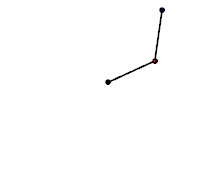Pendulums seem fairly simple, right? You take some mass, you take some string, throw them in a gravitational field, and bam! It goes back an forth, back and forth, back and forth. Without any kinds of friction, this will continue forever!
But, what if you take a pendulum, and then stick a pendulum on the end of that pendulum? Well basically, things get incredibly more complicated. For a single pendulum, especially one that has a small angle of oscillation, you can predict exactly where it will be in its cycle virtually infinitely far into the future. However for even a double pendulum, this becomes impossible, without calculating every single intermediate state of the pendulum. And the motion of multi-pendulum systems is incredibly complicated in and of itself - for an n-pendulum system, one must solve an n-dimensional system of equations do calculate the motion of each pendulum, involving the momenta, kinetic energy, and potential energy of each of the individual components of the system. Basically, multi-pendulums are hard.

From https://en.wikipedia.org/wiki/Double_pendulum
Another property of these systems is that they are so-called "chaotic," meaning that a small change in the initial conditions can lead to large changes in the end result of the system, especially as time goes on. For instance, say you have two double pendulums set up. You start them both at just about the same place, but offset the second one by a single degree from the first one. Initially they may follow very similar paths, but as time goes on, it will seem as if they could have started from completely different initial conditions. Chaos appears all over nature and mathematics.



1 Comment
Recommended Comments